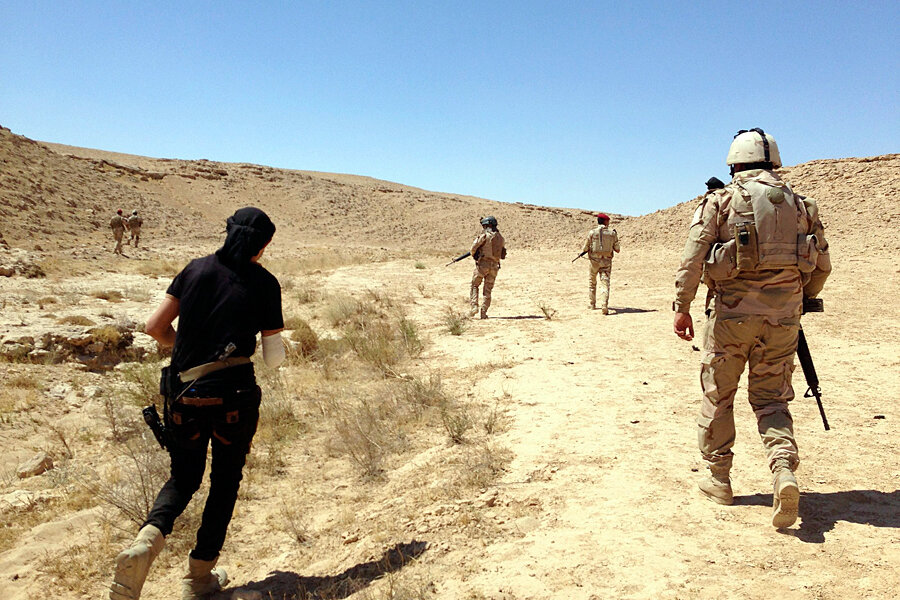Pentagon to send 500 more troops to Iraq, prepare for 'direct action' in Syria
Loading...
| Washington
Minutes after President Obama endeavored to make his case to the American people about the dangers of the Islamic State and the need for stepped-up US military force to “destroy” them, the Pentagon released its latest plan of action.
In the next week, roughly 500 more US troops will be deployed to Iraq, bringing the total number added this summer to more than 1,500. Most of them will be sent to operational command centers in Baghdad and Irbil, the capital of the Kurdish north. Another 150 will assess the skills of Iraqi soldiers, and the final 125 will help run the armed drones now bombing IS, also known as ISIL and ISIS.
To date, the US military has conducted about 150 airstrikes in Iraq – but this was when the US was on the defensive.
Now, Mr. Obama said, it’s time to “go on offense.”
This covers operations in Iraq – for now – but, a senior defense official notes, “The president has made it clear that he has the authority to strike ISIL wherever they are.”
This means, the official, who spoke on condition of anonymity because he was not authorized to talk to the press, adds that the US military “is ready to conduct direct action against ISIL targets in Syria.”
What the Pentagon is not discussing is the timing.
“Decisions about when to conduct these actions will be made at a prudent time,” the official says.
The other major step in the US plan to fight IS involves ramping up US assistance to the Syrian opposition. In the days to come, this will include calling on Congress “to give us additional authorities and resources to train and equip these fighters,” Obama said.
This is easier said than done, however, since it is frustratingly difficult to determine who, precisely, the “moderate opposition” is.
The less-extreme center of the Syrian opposition “is quite small and has gotten smaller over the years,” says retired Gen. Michael Hayden, the former director of the CIA.
“Finding that center, reinforcing that center, is much more difficult now than it would have been six, 12, 18 months ago,” he added in remarks Thursday at the Atlantic Council. “The saving grace is that it’s easier today than it will be six, 12, 18 months from now, too.”
Another tricky problem, however, is that it’s not clear that the Free Syrian Army, which is widely considered to be the best bet to gain this stepped-up US backing, “has a clear vision of what they would do with the Syrian state if they were able to assume control,” says Ben Connable, senior international policy analyst at the RAND Corp. and a former Marine intelligence officer in Iraq.
These questions about what the “end state” in Iraq and Syria resemble once the US military completes its mission are important because that’s how Pentagon planners devise their strategy in the first place.
“You start by envisioning an ‘end state’ condition, envisioning what you want to achieve,” says Mr. Connable. The planning proceeds from there.
This in turn brings up some complex questions. If the US military destroys IS in Syria, for example, that is sure to strengthen the standing of the Syrian President Bashar al-Assad and his brutal regime. What then?
And if IS is pushed out of Iraq, will the Sunnis turn their ire against the Shiite-led government there?
Former Iraqi Prime Minister Nouri al-Maliki has been replaced by Haider al-Abadi. But Prime Minister Al-Abadi is also a Shiite, and it appears as though Mr. Al-Maliki will now become vice president – which means resentments may linger, Connable says.
“So the grievances that drive the Sunnis to fight against the [Iraqi] Army are still there,” he adds. “What happens next?”







